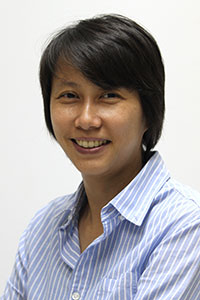
As I was indulging myself with a nice cup of coffee on a lazy Sunday morning, I spotted an article by Sopon Pornchokchai sharing his views on the controversial coal-fired plants in Krabi and Songkhla. I got quite a shock.
In his "Is Greenpeace being flexible with the truth?" article, the real-estate expert and PhD holder threw his support behind coal. He also alleged most protesters who join hands with environmentalist group Greenpeace are simply outsiders. He even said the environmentalists have run a one-sided propaganda to persuade locals to oppose the establishment of coal-fired power plants.
I am sure the expert didn't hear about a gathering of some 300 Muslims in Khlong Pradu village, in Songkhla's Thepha district, last Friday who are to be evicted from their homes to pave the way for the plant which is situated close to the village cemetery. They lament that they have to live far away from the burial site of their ancestors. In Krabi, the plant will be built on a cemetery.

Mr Sopon wouldn't really think these Muslims are hired from outside Krabi and Songkhla to voice such concerns, would he? Many Muslims believe people should live near the cemetery where their ancestors are buried so that they can keep the place in good condition. The eviction plan breaks their hearts.
In proposing the projects -- an 800-megawatt plant in Krabi's Nua Khlong district and a 2,200-megawatt plant in Songkhla's Thepha district -- the Energy Ministry cited power security in the South as the main reason. It insisted the plants are to respond to the increasing demand for power in the region where the tourism sector, particularly major destinations like Phuket and Koh Samui, has grown rapidly.
According to the Energy Policy and Planning Office, a tourist uses four times the electricity that local residents do and the plants must go ahead. Yet, that reason is hard to swallow for some given the excessive energy reserve margins that result from wrong demand forecasts.
While Mr Sopon wondered if Greenpeace was looking at all sides of the story, did he ever question if the public hearings for the two projects were just a cosmetic process? I am quite sure Mr Sopon is not alone. His views represent those of a large portion of middle-class people in the city. He seems to forget one thing: he is also an outsider, no matter how much he admires coal.
As an outsider just like Mr Sopon, I believe the best way to decide whether to build or not to build a coal-fired power plant at a given location is to leave it to local residents -- the very people who are to be affected by the projects.
In case of Krabi, the residents insist the coal-fired power plant isn't necessary given the abundant sources of alternative energy -- biomass from palm oil. But the government and coal supporters do not believe the renewables are sustainable enough. If the plants are really needed, which I doubt, I think it would be fairer to build the facility close to those who need to use the energy.
This is not impossible. Paris has done this for decades. The Issy-les-Moulineaux Waste-to-Energy plant, the third of its kind in the French capital, established in 2007, processes some 460,000 tonnes of residual waste a year. The plant was built on a site just less than 10km from the heart of the city. The rationale is that people should be responsible for their actions. If the residents of Paris throw away huge amounts of waste each year, they must accept the plants which use the waste as an energy source.
Today half of Paris is heated by renewable energy from the three plants which altogether generate some 200,000 MWh of electricity, enough to feed 465,000 homes or over one million inhabitants.
By the same principle, if the energy demand on Phuket and Koh Samui has risen, then a coal-fired power plant should be built right on the islands, not on other people's villages or cemeteries.
And since coal is seen as "safe and clean," people in Bangkok who consume huge amounts of energy should agree to a coal-fired power plant being constructed in the heart of the city, to ensure an electricity supply for the mega shopping malls that are scattered across Bangkok.
Besides, Mr Sopon said he had conducted scientific research and found that only eight people have died from all types of pollution in Rayong's Map Ta Phut in 2012. So I assume these power plants and incinerators are safe enough to build next to a high-end housing estate in Bangkok.
This principle should be applied for nuclear power plants if they are to become an option for the country. City people should be brave enough to let go of their "Not in My Backyard" syndrome.
All of us must use energy responsibly.
Sirinya Wattanasukchai is an Assistant News Editor, Bangkok Post.
